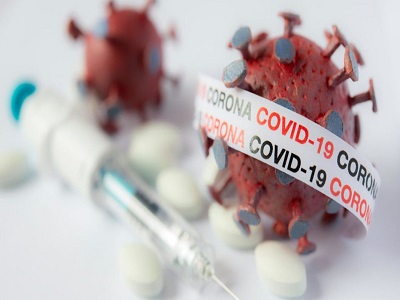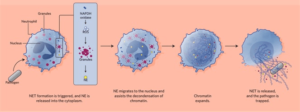Review on the findings of CoVID-19 treatment & prevention
In the days of the CoVID-19 Pandemic, a variety of news is published about the findings of scientists in the field of treatment and prevention of this disease. Some news agencies or social media pages cause people to worry and stress by publishing false news, so it is recommended that people follow the news about CoVID-19 only from reliable scientific sources. Here are a few basic facts about a stomp pad and how it is used.
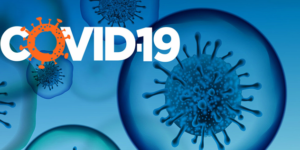
How do vaccines help us immunize?
Before making headlines about world news, we will give a brief and simple explanation of the function of antibodies and vaccines to better understand the following. There are two types of cells in our body specifically to fight infectious agents. A group of these cells called T lymphocytes produce cellular immunity. Another group called B lymphocytes, secrete antibodies. Antibodies are specific to each pathogen and fall into five main groups (IgM, IgG, IgD, IgE, and IgA). The immunity produced by the antibody is called humoral immunity.
Eventually, both cellular and humoral immunity produces cells called memory cells. Memory cells cause our body to remember the so-called pathogen, and if the disease recurs, the body will be able to cope more and better. Because if there are memory cells in the body, there is no need to identify a new pathogen.
This is the mechanism by which vaccines help us. In other words, the vaccine contains the pathogenic antigen (proteins on the surface of a virus or bacterium that immune cells react with to detect the pathogen), not only producing high levels of antibodies but also memory cells. Also activates. Some vaccines contain killed or weakened viruses or bacteria. Others contain genetic material that stores the production of these antigens, making only the antigen part of the virus or bacterium when it enters the body.
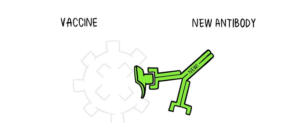
Immune cells produce structures similar to spider webs to kill viruses
Immunologists at McMaster University in Canada have discovered a defense mechanism that was previously unknown. In this defense mechanism, structures resembling a spider’s web trap and kill pathogens such as the flu or SARS-CoV-2 (virus caused CoVID-19).
Neutrophils are the most abundant white blood cells in the human body. When neutrophils are exposed to pathogens, they fight them in a variety of ways. One way neutrophils fight pathogens are called neutrophil extracellular trap, or NET.
If neutrophils bind to pathogens coated with antibodies, they explode, and their genetic material, along with some chemicals, forms a sticky web similar to a spider’s web. The viscous network traps and kills pathogens. This process is called NETosis. Immunoglobulin A (IgA) is a type of neutralizing antibody involved in this process. IgA plays an important role in the immunization of the respiratory and gastrointestinal tract.
According to the study, IgA significantly reduces the number of viruses needed to initiate NETosis and thus speeds up the process. The findings, published online in the Proceedings of the National Academy of Sciences, provide important insights into how neutralizing antibodies work against viruses in the respiratory tract. Elimination of the virus in the early stages and before they develop and accumulate in the body prevent subsequent infections. Therefore, this discovery has a special role in the design and manufacture of vaccines and technologies such as nasal sprays. Of course, the production of this type of vaccine has difficulties such as the possibility of excessive inflammatory reactions, which need further investigation and research in this area.
The antiviral drug RemdeSivir has two mechanisms against the CoVID-19 virus
According to findings published in the Journal of Biological Chemistry, researchers at the University of Alberta have discovered a new mechanism of action of the antiviral drug RemedSivir against SARS-CoV-2.
The research team had previously demonstrated how RemdeSivir inhibited virus replication machines in vitro. When the coronavirus enters a living cell, it first uses the cell’s capabilities to make proteins that make its own genetic material. The viral genetic materials then begin to make several copies. RemdeSivir disrupts the copying of the virus genetic material in two stages.
To better understand how the drug works, Matthias Goethe, head of medical microbiology and immunology at the Alberta School of Medicine and Dentistry, likens genetic material to the virus engine. “The first mechanism the team has identified is like pouring diesel fuel into an engine that needs regular gasoline,” he said. Adding the wrong fuel to the engine reduces its speed. The newly identified mechanism blocks the path of replication of the genetic material. This situation is like when your engine has to move from point A to point B with the wrong fuel and terrible road conditions. Under these circumstances, you either get to point B too late or it never happens. Thus, RemdeSivir stops or delays the spread of the virus, which in turn reduces the virus from spreading and spreading in the body. The University of Alberta researcher believes that antiviral drugs usually do not have more than one mechanism of action.
Since RemdeSivir is the only antiviral drug for emergency use as a treatment for CoVID-19, understanding the mechanism of action of this drug can help to improve and improve the treatment methods against CoVID-19. The scientist also stressed the need to continue clinical and laboratory research and study the exact effect of the drug on the viral load (the amount of virus in the body). In other words, more data is needed to investigate the need to use RemdeSivir in different phases of the disease.
Clinical trials of RemdeSivir in CoVID-19 patients are underway worldwide, for example in one case by the US National Institutes of Health, whose preliminary results showed a reduction in the average recovery time of patients to 11 days compared with 15 days.
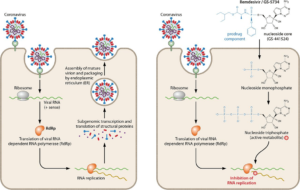
References;
- https://cdn.the-scientist.com/assets/articleNo/66459/iImg/33709/uploads/f3-10_19_net__46.pdf?_ga=2.249325639.1760993913.1625229927-1493741879.1625229922
- https://www.biorxiv.org/content/10.1101/2021.01.04.424830v2.full
- https://www.sciencedaily.com/releases/2021/06/210629101244.htm
- https://www.khanacademy.org/science/high-school-biology/hs-human-body-systems/hs-the-immune-system/a/hs-the-immune-system-review
- https://www.sciencedaily.com/releases/2020/09/200924082656.htm
- https://www.who.int/news-room/feature-stories/detail/how-do-vaccines-work


